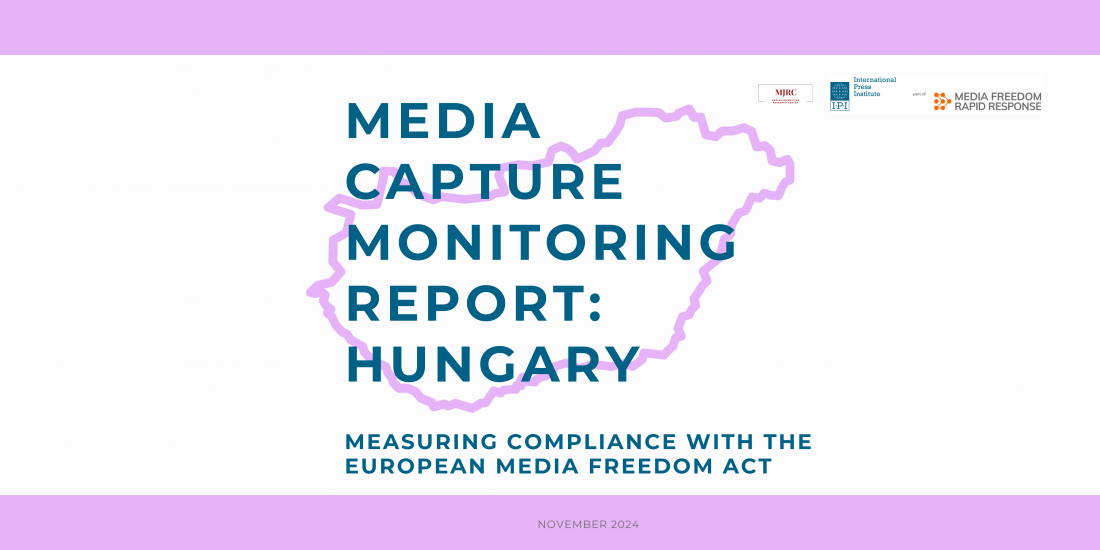The International Press Institute (IPI) and the Media and Journalism Research Center (MJRC) have joined forces to produce the Media Capture Monitoring Report, aimed at assessing the state of media capture by political interests and the extent to which regulation to protect media independence meets new standards set by the European Media Freedom Act (EMFA).
Hungary has long been the model of media capture in the European Union using the tools of the state to turn public media into government propaganda, to ensure political control of the media regulator, to misuse state advertising to reward media allies and punish its critics and to use government aligned oligarchs to ensure private media is closely aligned with government.
The Hungary report sheds light on how, despite a legal framework that appears to protect the political independence of public broadcasters and media regulators, these entities have become fully captured by the governing party.
It is the latest report to be published in a series of seven country reports to be released in 2024.
DOWNLOAD THE REPORT
The European Media Freedom Act (EMFA), implemented in May 2024, mandates Member States to reform national media legislation in several key areas to curb media capture. The EMFA aims to secure the independence of media regulators and public service media, ensure ownership transparency, uphold media pluralism, and prevent the misuse of state resources to sway editorial content.
EXPLORE THE REPORT’S METHODOLOGY
Media Capture in Hungary is already well entrenched and the new rules of EMFA, even if they result in modifications to Hungary’s regulations, are unlikely to reverse the situation. This report sets out the stark gap between the laws nominally designed to protect media independence and how they are applied in practice. It also identifies recommendations for where improvements might be made.
Hungary’s National Media and Infocommunications Authority (NMHH) and the Media Council, while legally defined as independent, are under the direct control of the governing Fidesz party and use their powers to favour the distribution of broadcast licences to allies and discriminate against its critics. The Media Council was forced to nod through the formation of the KESMA foundation in 2018 that brought together many of the government aligned private media under one roof hugely compromising media pluralism and editorial independence in the country. The public broadcaster has long operated as a propaganda channel of the government. Meanwhile critical private media are starved of state advertising.
In its first year, the report series covers seven EU countries – Bulgaria, Finland, Greece, Hungary, Poland, Romania, and Slovakia – serving as a pilot for an annual assessment to monitor progress in the coming years. These reports provide valuable insights and resources for media rights organizations, policymakers, and advocates working to monitor and drive legislative reform for media freedom across Europe.
For more information or media inquiries, please contact:
- Oliver Money-Kyrle, Head of Europe Advocacy and Programmes – IPI, [email protected]
- Marius Dragomir, Project Editor – MJRC, [email protected]
The project is a part of the Media Freedom Rapid Response, a Europe-wide mechanism which tracks, monitors and responds to violations of press and media freedom in EU Member States and Candidate Countries. The project is co-funded by the European Commission.

